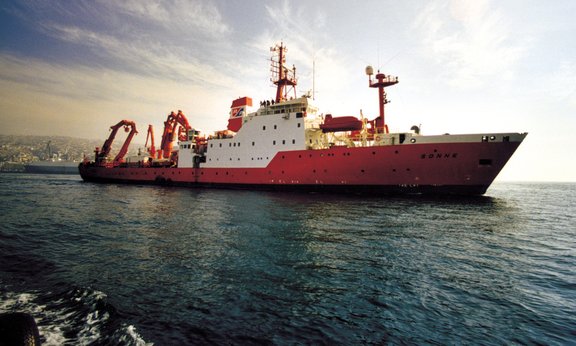In a research expedition offshore Japan organized by the Center for Marine Environmental Sciences at the University of Bremen, a team around the Innsbruck geologist Michael Strasser investigated the dynamic processes of remobilization of sediments caused by earthquakes. In these processes, organic material is transported from shallow water to the deep sea. The sediment layers formed in this way reveal important information about the history of the earthquake and the carbon cycle in the deep sea. For this purpose, a drill core was extracted from the 7.5 km deep Japan trench and analysed using innovative analytical methods.
Do earthquakes allow life in the deep sea?
The results could provide new insights into life in the deep sea. Using the so-called (online-gas) radiocarbon method, the researchers were able to show that earthquakes transport organic materials from shallow water to the deep sea. With the help of this dating method, which was carried out at ETH Zurich, the activity of radioactive carbon (C14) and the content of organic carbon in the individual deposit layers can be determined. This allows the relative age of the organic substance in the individual sediment layers to be determined. The drill core investigated has three distinct intervals with older organic material and an increased supply of organic carbon per time. These layers correspond to the three historically-known earthquake events in the Japan Trench, such as the Tohoku-oki earthquake in 2011, which hit the headlines mainly due to the nuclear disaster in Fukushima. The documentation of earthquake-related remobilization processes of large amounts of organic carbon to the deep sea trench provides new information on how deep-sea life is made possible.
Selection of sediment samples by novel method
Together with the American Woods Hole Oceanographic Institute, the method of Ramped PyrOx measurements (pyrolysis) was also used for the first time for dating sediment layers from the deep sea. Organic material is burned at different temperatures. Since older organic materials contain stronger chemical compounds, higher temperatures are required for their combustion. The novelty of this procedure lies in the fact that the relative age variation of the individual temperature fractions between two samples limits the age difference between sediment layers.
Future earthquake prognosis
“As part of an FWF project, I am currently working together with a PhD student on the large-scale geological recording of the origin and frequency of sediments in deep-sea trenches. For this purpose, we analyze several cores from the Japan Trench. The identification and dating of earthquake-related deposits is essential for future predictions about the probability of earthquakes," says Michael Strasser.
Links
- Rolling in the Deep: Tectonically-triggered sediment and carbon export to the Hadal zone. Rui Bao, Michael Strasser, Ann P. McNichol, Negar Haghipour, Cameron McIntyre, Gerold Wefer, Timothy I. Eglinton Nature Communications
- Department of Geology
- Michael Strasser
- Department of Geology, ETH Zürich
- Oceanographic Institute, Woods Hole
- MARUM - Center for Marine Environmental Sciences

